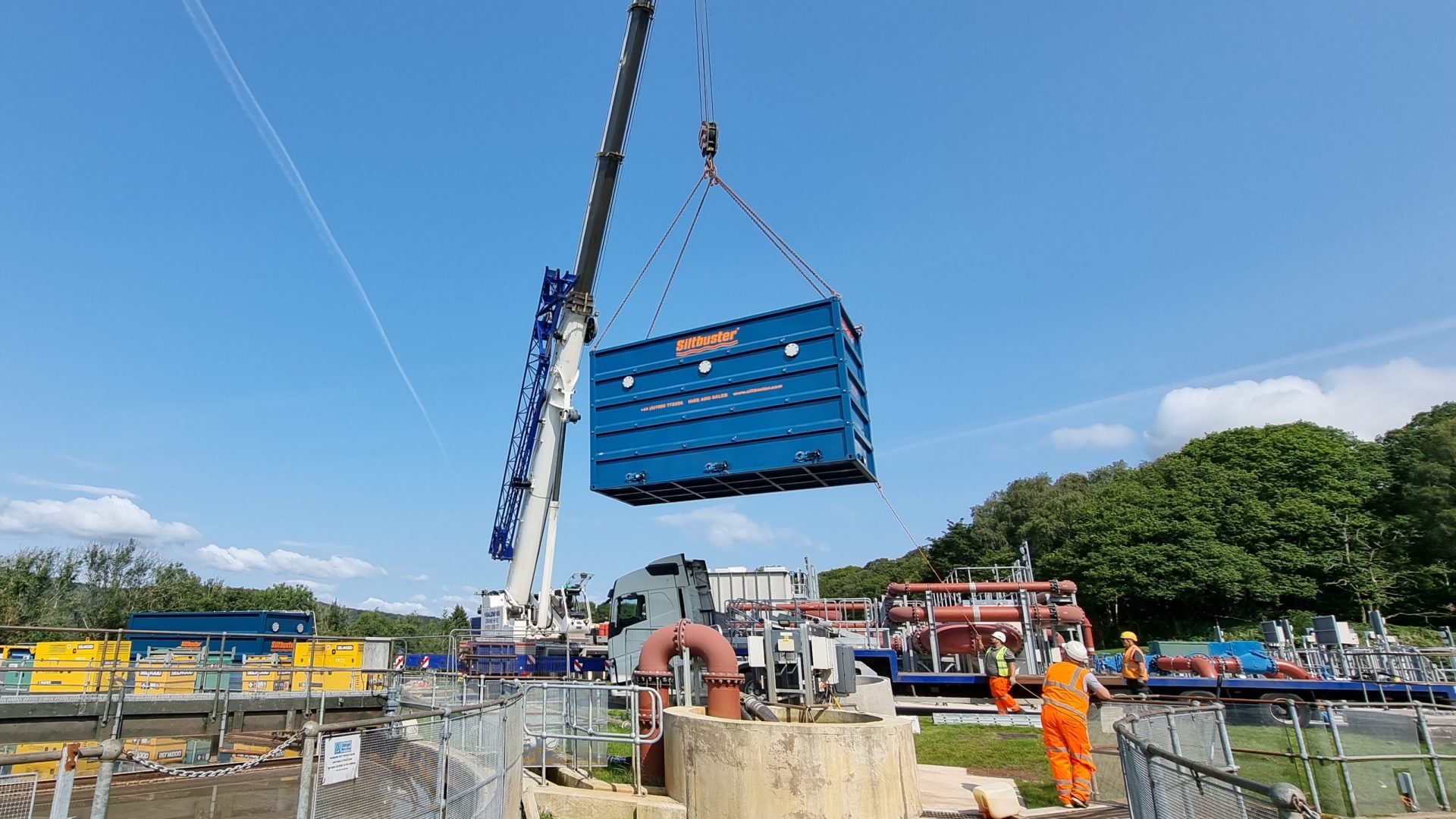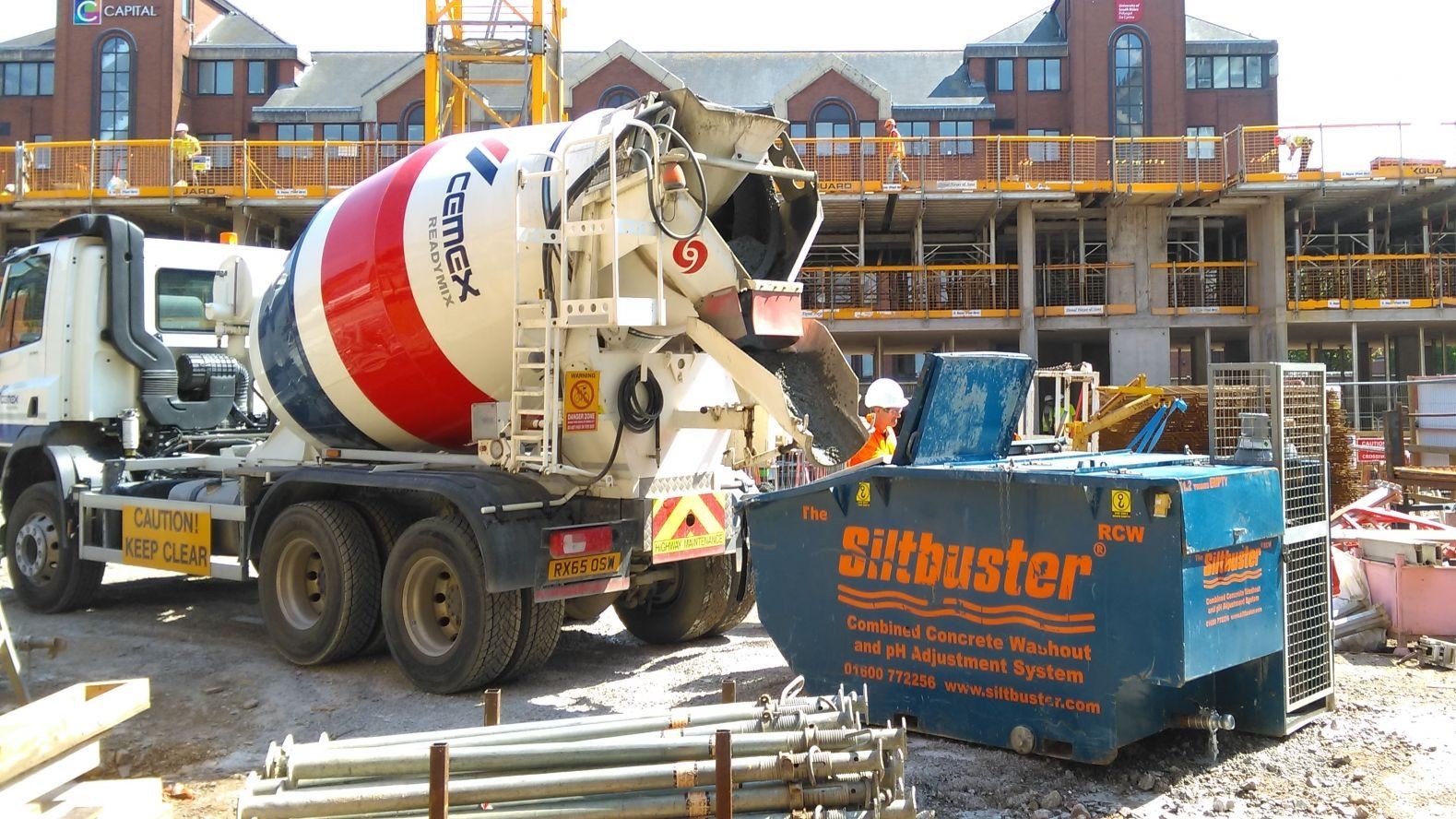As the weather predictably turns wetter once more, the volumes of water running along the surface of construction sites across the UK increases significantly.
The water from rainfall and runoff picks up contaminants as it makes its way across site, and it legally requires treatment before being pumped away. The trouble is, how do you fit a water treatment plant on a site, without losing a large amount of valuable space?
Minimising footprint without compromising treated water quality
When designing a treatment plant as part of a water management plan, it’s important to consider not just the site’s size and ground conditions, but also the activities on site (& associated contaminants), the space available and the treated water quality needed.
It’s possible to treat to a very high standard and discharge to watercourse, but if a foul sewer connection is available (and permission granted), then a simpler, smaller system may be possible. Understanding that visually clean water isn’t always required (when the water is being treated further downstream) can offer large cost and footprint savings.
For sites doing substantial concrete pours and the large amount of washout associated with these, it’s worth hiring in a specific concrete washout unit like the Siltbuster RCW. Instead of allowing this high pH wash water to flow into the main treatment plant, treating the wash water separately actually reduces the amount of equipment and space needed and ultimately saves money.
Once wash water is dealt with, the remaining contaminated water can be easily treated using pre-treatment and lamella settlement, allowing gravity to do the work, and leaving clean treated water.
Almost 20 years ago Siltbuster released the first ‘plug and play’ lamella settlement tank into the UK market. Research and development are non-stop, and the range of treatment solutions has grown significantly, but all with the same principle. By using lamella plates in our settlement tanks, we offer a large treatment capacity within a very small footprint. If using standard open settlement tanks, your treatment plant would take 10x as much space on site!
By using modular treatment systems, as a project ramps up or approaches completion, capacity can be increased or reduced by adding or removing modular treatment stages. For example, the treatment requirements at a new housing estate will reduce as the permanent drainage system is installed and the site completed in phases. As each phase is completed, the amount of contaminated water requiring treatment reduces and it’s possible to remove excess capacity. This reduces the footprint needed and the cost, whilst still maintaining compliance.
In summary
While it may be easy to overlook water treatment when coordinating the many moving parts on a construction site, the right water treatment supplier should make it very easy to put the right protection in place. By using a rapidly deployable fleet of modular treatment solutions, water can be treated to a standard suitable for discharge to watercourse under a discharge permit. At Siltbuster, we have the UK’s largest fleet, with some systems available to deliver to site the very next day, meaning both planned and unplanned treatment requirements can be met for a wide range of different pollutants. We work closely with our clients and are happy to advise when a smaller system could save money.




